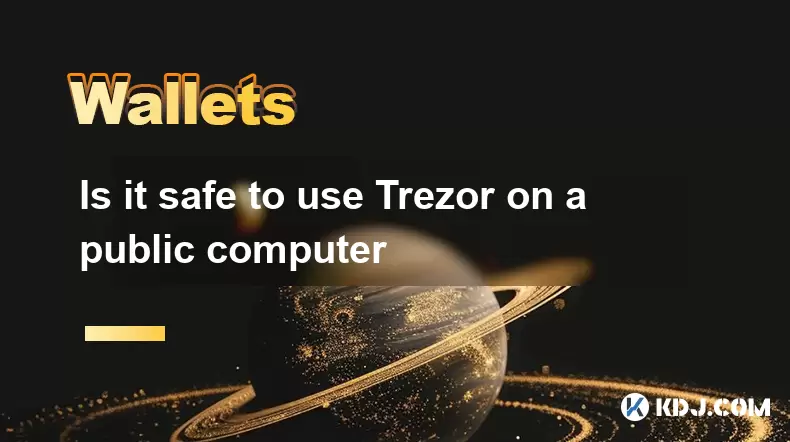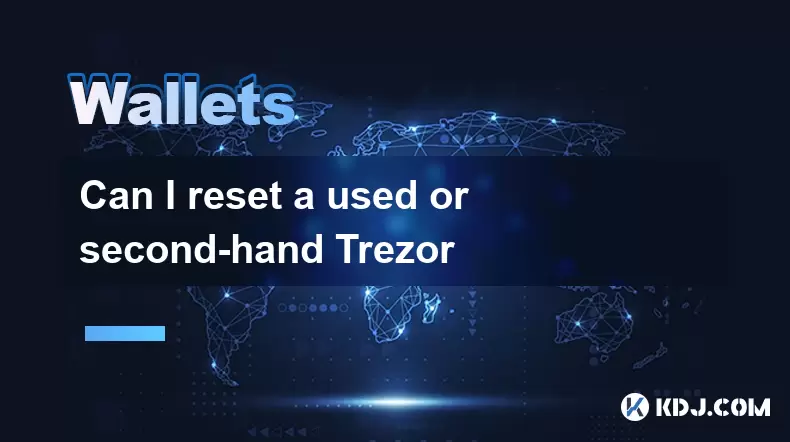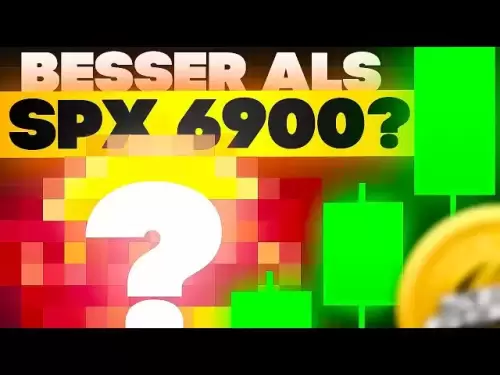-
 Bitcoin
Bitcoin $109,507.9823
0.43% -
 Ethereum
Ethereum $2,716.0274
3.79% -
 Tether USDt
Tether USDt $1.0003
-0.01% -
 XRP
XRP $2.3859
3.05% -
 BNB
BNB $665.2705
0.56% -
 Solana
Solana $154.6874
1.56% -
 USDC
USDC $1.0002
0.02% -
 TRON
TRON $0.2896
1.05% -
 Dogecoin
Dogecoin $0.1738
1.67% -
 Cardano
Cardano $0.6117
3.72% -
 Hyperliquid
Hyperliquid $40.3052
3.82% -
 Sui
Sui $2.9817
2.08% -
 Bitcoin Cash
Bitcoin Cash $505.0944
0.71% -
 Chainlink
Chainlink $14.0820
1.96% -
 Stellar
Stellar $0.2902
12.90% -
 UNUS SED LEO
UNUS SED LEO $9.0423
-0.34% -
 Avalanche
Avalanche $18.7084
1.54% -
 Hedera
Hedera $0.1714
6.33% -
 Shiba Inu
Shiba Inu $0.0...01218
2.48% -
 Toncoin
Toncoin $2.8261
1.24% -
 Litecoin
Litecoin $88.8228
1.59% -
 Monero
Monero $319.1344
2.71% -
 Polkadot
Polkadot $3.5479
2.69% -
 Dai
Dai $1.0001
0.00% -
 Ethena USDe
Ethena USDe $1.0010
0.06% -
 Uniswap
Uniswap $8.2690
6.49% -
 Bitget Token
Bitget Token $4.3622
1.19% -
 Aave
Aave $298.5989
2.11% -
 Pepe
Pepe $0.0...01042
1.97% -
 Pi
Pi $0.4663
1.15%
How to find a specific receiving address on my Trezor
To securely receive cryptocurrency on your Trezor, generate a new receiving address through the "Receive" tab in Trezor Suite.
Jul 09, 2025 at 10:36 pm

Understanding the Purpose of a Receiving Address
A receiving address is a unique identifier used in blockchain networks to receive cryptocurrency. Each time you want to accept funds, your wallet may generate a new address to enhance privacy and security. On your Trezor hardware wallet, these addresses are derived from your seed phrase using hierarchical deterministic (HD) algorithms. Understanding how to locate or generate a specific receiving address is crucial for managing transactions securely.
Trezor Model T and Trezor One both support this functionality through the Trezor Suite software. You must ensure that your device is initialized and properly connected before proceeding.
Accessing Trezor Suite for Address Management
To begin, navigate to the official Trezor website and download the Trezor Suite application. Once installed, connect your Trezor device via USB and unlock it using your PIN. Open the software and select the appropriate wallet profile if multiple wallets are present.
- Click on the "Receive" tab located in the main navigation menu.
- Select the cryptocurrency you wish to receive, such as Bitcoin, Ethereum, or Litecoin.
- The interface will display the current receiving address associated with your account.
Navigating the Receive Section
Inside the "Receive" section, you can view the default receiving address generated by your wallet. This address changes each time you receive a transaction to maintain anonymity. However, if you need to find a prior address or generate a new one manually, additional steps are required.
- Scroll down to the "Address Index" option beneath the displayed QR code.
- Enable advanced settings if they are not already visible by toggling the "Advanced Mode".
- You'll see a field labeled "Derivation Path", which allows you to input custom paths for generating specific addresses.
Using Derivation Paths to Locate Specific Addresses
Each receiving address corresponds to a unique derivation path based on BIP standards like BIP-44 or BIP-49. These paths follow a structured format: m/purpose'/coin_type'/account'/change/address_index. If you're looking for a particular address used in a past transaction, knowing the correct index number becomes essential.
- Increase the address index value to cycle through previously generated receiving addresses.
- If you have a backup of the derivation path, enter it manually into the provided field.
- Review the resulting address and cross-reference it with your transaction history or external records.
Exporting and Verifying Receiving Addresses
For added verification, you may export the public key or extended public key (xpub) to derive addresses externally using compatible tools or libraries. This process requires caution and should only be done on secure, offline environments to prevent exposure of sensitive data.
- Go to the "Settings" section within your wallet profile.
- Locate the "Public Key Export" feature under the relevant cryptocurrency.
- Copy the xpub or public key and use a trusted derivation tool to explore all associated receiving addresses.
Frequently Asked Questions
Q: Can I reuse a receiving address on my Trezor?
While technically possible, reusing a receiving address is discouraged due to privacy concerns. Each new transaction should ideally use a fresh address to avoid linking multiple transactions to the same user.
Q: Why do receiving addresses change every time I open the "Receive" tab?
This behavior is intentional and follows best practices in cryptocurrency management. Changing addresses after each transaction improves anonymity and prevents third parties from easily tracking your financial activity.
Q: What happens if I send funds to an old receiving address?
Sending funds to any valid receiving address associated with your wallet will still result in the funds being accessible. The wallet software tracks all derived addresses, so there's no risk of permanent loss.
Q: How many receiving addresses can my Trezor wallet generate?
Trezor wallets support a virtually unlimited number of receiving addresses due to the HD derivation system. Most wallets default to generating up to 20 unused addresses at a time but can continue generating more as needed.
Disclaimer:info@kdj.com
The information provided is not trading advice. kdj.com does not assume any responsibility for any investments made based on the information provided in this article. Cryptocurrencies are highly volatile and it is highly recommended that you invest with caution after thorough research!
If you believe that the content used on this website infringes your copyright, please contact us immediately (info@kdj.com) and we will delete it promptly.
- NEXBRIDGE, NEXPLACE, and the Bitcoin Ecosystem: Building a New Financial Frontier
- 2025-07-09 23:10:13
- MEXC Launchpad & PUMP Token: Grab a 40% Discount?
- 2025-07-09 22:50:12
- Trade System Revolution: How XDC and the End of Faxes Are Reshaping Finance
- 2025-07-09 23:10:13
- Ripple, CLARITY Act, and the XRP Case: A New York Minute on Crypto Regulation
- 2025-07-09 23:50:12
- No Rs 50 Coin? Delhi HC Hears Why India Prefers Banknotes
- 2025-07-09 23:15:11
- No Rs 50 Coin? Delhi HC Hears Why Banknotes Reign Supreme
- 2025-07-09 23:50:12
Related knowledge

How to find a specific receiving address on my Trezor
Jul 09,2025 at 10:36pm
Understanding the Purpose of a Receiving AddressA receiving address is a unique identifier used in blockchain networks to receive cryptocurrency. Each...

How to connect Trezor to Rabby wallet
Jul 09,2025 at 05:49am
What Is Trezor and Rabby Wallet?Trezor is a hardware wallet developed by SatoshiLabs that allows users to securely store their cryptocurrency assets o...

Is it safe to use Trezor on a public computer
Jul 09,2025 at 08:56pm
Understanding the Risks of Using Trezor on a Public ComputerUsing a Trezor hardware wallet is generally considered one of the most secure methods for ...

What happens if I forget my Trezor passphrase
Jul 09,2025 at 03:15am
Understanding the Role of a Trezor PassphraseIf you use a Trezor hardware wallet, you may have set up a passphrase as an extra layer of security beyon...

How to stake Polkadot (DOT) with Trezor
Jul 09,2025 at 09:42pm
Understanding Polkadot (DOT) StakingStaking Polkadot (DOT) allows users to participate in network validation and earn rewards. Unlike traditional proo...

Can I reset a used or second-hand Trezor
Jul 09,2025 at 11:49am
Understanding the Reset Process for a Used or Second-Hand TrezorIf you have acquired a used or second-hand Trezor wallet, one of the first things you ...

How to find a specific receiving address on my Trezor
Jul 09,2025 at 10:36pm
Understanding the Purpose of a Receiving AddressA receiving address is a unique identifier used in blockchain networks to receive cryptocurrency. Each...

How to connect Trezor to Rabby wallet
Jul 09,2025 at 05:49am
What Is Trezor and Rabby Wallet?Trezor is a hardware wallet developed by SatoshiLabs that allows users to securely store their cryptocurrency assets o...

Is it safe to use Trezor on a public computer
Jul 09,2025 at 08:56pm
Understanding the Risks of Using Trezor on a Public ComputerUsing a Trezor hardware wallet is generally considered one of the most secure methods for ...

What happens if I forget my Trezor passphrase
Jul 09,2025 at 03:15am
Understanding the Role of a Trezor PassphraseIf you use a Trezor hardware wallet, you may have set up a passphrase as an extra layer of security beyon...

How to stake Polkadot (DOT) with Trezor
Jul 09,2025 at 09:42pm
Understanding Polkadot (DOT) StakingStaking Polkadot (DOT) allows users to participate in network validation and earn rewards. Unlike traditional proo...

Can I reset a used or second-hand Trezor
Jul 09,2025 at 11:49am
Understanding the Reset Process for a Used or Second-Hand TrezorIf you have acquired a used or second-hand Trezor wallet, one of the first things you ...
See all articles

























































































